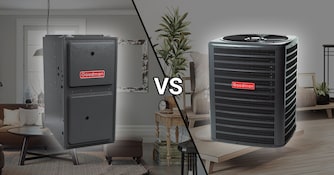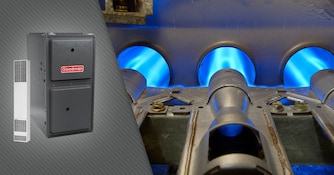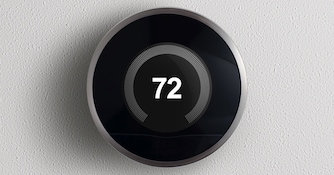
What's Inside a Furnace?
Most American homes use a central forced-air system to heat and cool their homes throughout the year. One of the important parts of such a system is the furnace.
During the summer, the outdoor air conditioning unit works to remove heat from the indoor air while the furnace blower circulates the air through the system.
During the winter, the furnace blower circulates air, heated either by an outdoor heat pump or, in most cases, by the furnace’s burner.
To understand how your furnace works, there are a few features that you need to be aware of.
Burner
First, unless a heat pump is being used, a furnace needs to heat the air it sends through the ductwork. This means a burner is required to combust fuel (typically gas or
oil) to create heat. 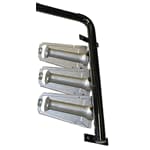
Burners can work in three ways: single-stage, two-stage, and modulating.
Single-stage burners are simply either on or off. When heat is needed, they will always fire at the same output, regardless of the home’s need or outdoor temperature considerations.
Two-stage furnaces are more efficient. As their name suggests, they can heat at two levels, low and high, depending on the needs of the home.
Modulating burners offer the most consistent temperatures, as they will operate at any point within a specified range of output levels. This makes your furnace much more efficient, as you are only using the energy you need when heating your home.
Heat Exchanger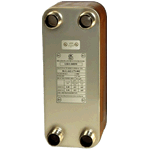
Like any heating device, such as a boiler or a heat pump, a furnace also has a heat exchanger. This heat exchanger facilitates the transfer of heat from the combustion gases produced by the burner to the air being circulated in the system. The efficiency of a furnace will depend on the type/number of heat exchangers used.
Conventional furnaces typically use a single heat exchanger and average about 80% AFUE (Annual Fuel Utilization Efficiency). That means that 80% of the heat produced by the burner is transferred to the air sent around the house.
Condensing furnaces feature a second heat exchanger to extract latent heat from water vapor in the combustion gasses. This heat normally leaves with the flue gasses, but retaining this heat via a second heat exchanger can raise AFUE to over 90%.
Blowers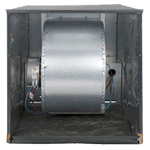
Once the air is heated, it needs to be sent through the ductwork of the home (or else, what’s the point?). Like burners, blowers come in different degrees of operating flexibility.
Multi-speed blowers have several speeds (usually 3-5) to select from. At the time of installation, a certain speed can be set for each of the different operating modes. Because these speeds are fixed, overall efficiency cannot be optimized.
Variable-speed blowers, just like modulating burners, are able to adjust their speed over a continuous range to match system operating conditions. Different speed profiles are available for each type of demand (low-stage vs. high-stage, heating vs. cooling, etc.).
Orientation
Finally, furnaces are available in a variety of orientations – the direction air enters and leaves the furnace.
Upflow furnaces discharge heated air through the top of the unit flowing up, while return air can come in from either the bottom or sides of the furnace.
Downflow furnaces are the opposite of upflow, meaning heated air leaves through the bottom and return air is fed through the top or sides of the furnace.
Horizontal furnaces are useful in attics and crawl spaces, as air is discharged from the side of the furnace, while return air can come from the top, bottom, or the side opposite the discharge.
Low-Boy furnaces are designed for installation in low spaces, having both supply and return connections at the top of the furnace. Importantly, many furnaces are convertible from one type to another and may be described as multi-position.


